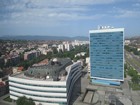
1IMG_9977 - The urbanization after WW II led to the Communists to build many apartment buildings. We visited in one on Friday night.
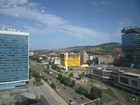
1IMG_9978 - The yellow, former Holiday Inn was the famous ground zero of the siege, and base for newsmen, politicians, and diplomats.
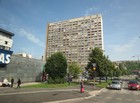
1IMG_9981 - For rapid construction the Communists used large reinforced-concrete panel techniques called panelák.
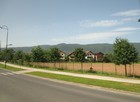
1IMG_9983 - South of the city and the airport, where a tunnel helped save Sarajevo during the Serbian Siege of 1992-6.

1IMG_9991 - During the siege, on June 30, 1992, a Canadian-United Nations battalion took control of the airport and this corridor south of it.
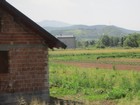
1IMG_9995 - That narrow corridor extended from the airport into those Bosnian-held mountains, with Serbian forces on both sides.

1IMG_9996 - In March-June 1993 the Bosnian Army built a tunnel under this airport runway, from the Dobrinja neighbourhood.
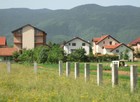
1IMG_9997 - The modern Sarajevo suburbs south of the airport, and Mount Igman, site of the front lines of combat, still with a risk of land mines.

IMG_0003 - The tunnel emerged in the basement of this house, in the United Nations-controlled Butmir neighbourhood.
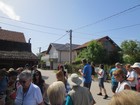
IMG_0004 - This neighbourhood managed to keep the secret of the so-called "D-B Tunnel", named for Dobrinja to Butmir.

IMG_0007 - The street is now Ulica Tuneli. The house would have been holed before or during the UN takeover in June 1992.

IMG_0009 - The sign on the Kolar house marking the tunnel, accompanied by two bullet holes.